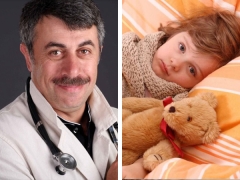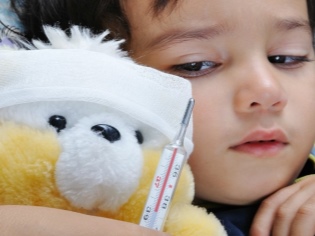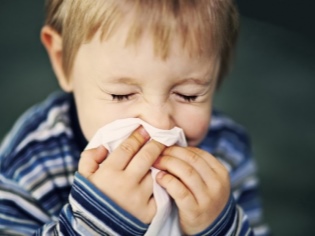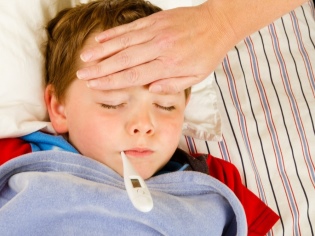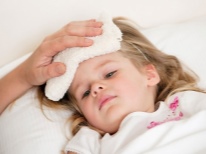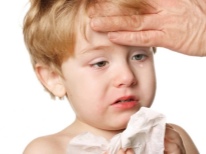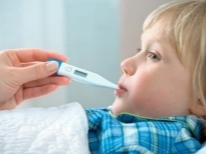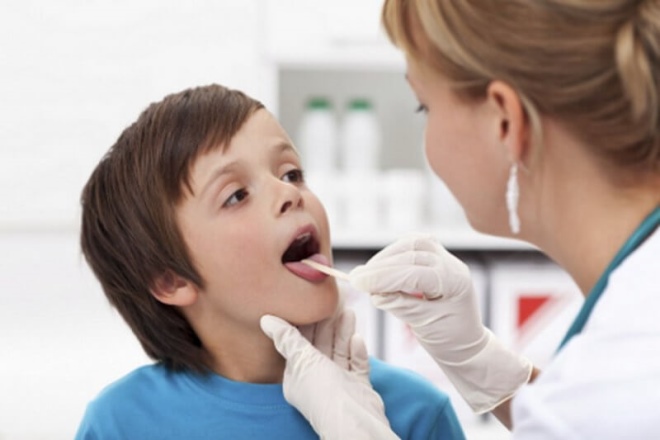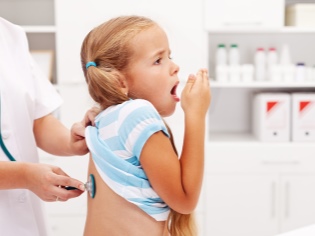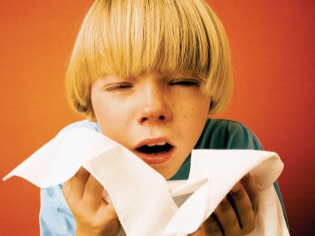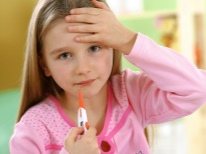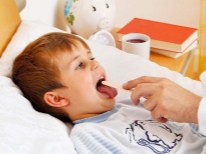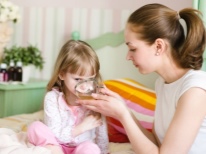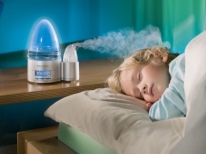Doctor Komarovsky about ORZ
Quite often, parents have to hear from the doctor the diagnosis of acute respiratory infections. But what does a pediatrician mean when he makes such a “verdict”, and how does this disease differ from the flu ARVI, they know only a few. The famous doctor Yevgeny Komarovsky tells what this mysterious abbreviation represents and what parents should do if a child is diagnosed in such a way.
What it is?
ORZ is deciphered quite simply - an acute respiratory disease. This is a rather broad term, in which, according to Yevgeny Komarovsky, doctors include viral respiratory infections (ARVI), respiratory tract infections, and allergic diseases. Moreover, the acute respiratory disease includes both acute and chronic diseases.
Most often runny nose, cough in a child caused by viruses. If the crumb has subsided, he has a cough, does not breathe nose and pour snot, many mistakenly believe that the pussy caught a cold. A cold is hypothermia, and it has nothing to do with a viral lesion. Although hypothermia really serves as an excellent "background" for the development of symptoms of viral disease. But without a virus from cold alone, the disease does not occur.
Viruses enter the body most often through the nose. The body, in response, activates the production of nasal mucus, hence the snot originates. If the virus has penetrated further, then a cough also appears.
Bacterial lesions of the upper and lower respiratory systems usually occur as a complication of a viral infection. If the snot has become thick, it means that the mucus can no longer cope with the virus, moreover, bacteria can reproduce well in it, which is what happens. Less commonly, bacterial respiratory disease occurs as a primary, independent.
In case of allergies, when the child’s body cannot assimilate and process any protein-antigen, respiratory symptoms are also quite common - a runny nose and a cough. This is especially true for children who are sensitive to flowering, pollen, household dust, household chemicals, some medicines, etc.
Optimally, if the doctor who brought the child with a runny nose and cough, can make an accurate diagnosis and determine which pathogen "tried" - a virus, bacterium, fungus or allergen. But, unfortunately, modern pediatricians have very little time and sometimes knowledge of the specialty, but there are a lot of calls and patients in the clinic corridor. And therefore, when the doctor cannot precisely formulate what caused the respiratory symptoms, or he does not have time to sort out this question, the same mysterious record - ORZ appears in the child’s medical card.
Thus, to acute respiratory infections include:
- Rhinitis (including chronic and allergic.
- Pharyngitis.
- Nasopharyngitis.
- Tonsillitis.
- Laryngitis.
- Tracheitis.
- Bronchitis (all its forms).
- Bronchiolitis.
Of course, sensible parents should not be satisfied with the “ORZ” entry in the card; one should insist and clarify what kind of respiratory disease we are talking about — this is very important, first of all, for choosing a treatment strategy.
Treatment according to Komarovsky
Respiratory viral diseases (90% of all cases of acute respiratory infections relate to them) usually do not require any special treatment. The task of parents is to prevent thickening of mucus in the nose in order to prevent bacteria from complicating the child’s condition.And because the baby needs to drink more warm liquid, the saline solution should be instilled into the nose as often as possible so that the mucus remains liquid. As long as it flows from the nose, it is a normal process of combating local immunity with invader viruses. If the flow ceases, then a mistake is made and the treatment will have to be reconsidered.
Drying of mucus in the nose, as well as in the bronchi, which causes serious complications such as bronchitis, bronchiolitis and even pneumonia, contribute to the conditions in which there is a sick child.
Risks grow at times if a caring grandmother or mother wrapped a crumb in five blankets, and an electric heater was placed nearby. It’s very bad if, at the same time, they gave the child antibiotics, which are not effective against viruses, and increase the likelihood of complications by 3-4 times.
Favorable conditions are when the room is not more than 18-20 degrees Celsius, and the relative humidity of the air is in the range of 50-70%.
It is undesirable to bring down the temperature in case of viral ARD, since it is an important element of the immune response, since it produces interferons faster. The main thing is to ensure that the child actively gives off the excess heat, not saving it, so that there is no overheating. For this you need plenty of drink and cool air. But hot-water bottles with ice and cold grinding, according to Komarovsky, are extremely dangerous for a child. They can cause vasospasm and an increase in the temperature of the internal organs.
If the child is small and the temperature is high (above 39.0), and he carries it very hard, then it is advisable, in the opinion of Yevgeny Komarovsky, to give antipyretic drugs. "Paracetamol" and "Ibuprofen" are well suited for children.
It is not necessary to fight with a cold, if it is liquid. And you need to do everything so that it becomes liquid, if the nose is dry. To do this, use washing, saline irrigation of the nasal cavity.
To cough requires the same approach. It must be taken as an important protective mechanism that allows the child to recover. It is not necessary to give antitussive drugs, since a decrease in the reflex will cause stagnation in the bronchi, and the likelihood of pneumonia from a distant theoretical possibility will turn from the nearest and probable perspective.
Too dry air and elevated body temperature increase the risk of bronchial secretion drying out.
If ARI is caused by allergies, you will need to find and eliminate the source of allergens. Sometimes the doctor may recommend taking antihistamines and vasoconstrictor nasal drops. But you don’t need to use medicines yourself to treat an allergic child - there is a risk to worsen his condition.
Bacterial respiratory illnesses, which have arisen as an independent, primary disease, are usually quite difficult, and require treatment in the hospital provided exclusively with antibiotics.
Prevention
To reduce the likelihood of contracting an acute respiratory infection, you need to follow some safety measures:
- In the period of increasing mass incidence of viral infections and the flu You should not visit places with a large number of people with your child - mass events, supermarkets, shopping centers.
- Moving preferably not by public transport. If you don’t have a car, it’s helpful to stroll a few stops on foot.
- In the cold season it is not necessary to shorten the time for a child to walk in the fresh air, especially in frost: catching the virus in such conditions is a difficult task.
- The child needs to harden and improve his immunity. This should be done, again, by walking, taking vitamins. To give antiviral and homeopathic antivirals for prophylaxis is not appropriate. They do not have an efficacy that would be proven in a clinical setting and would satisfy the requirements of evidence-based medicine. Therefore, it is better to save money that you could spend on antiviral pills and buy fresh fruit for them for your child.
- A gauze mask is needed not for a healthy child, but for a patient.Although it is not very effective in holding back the flow of viruses that are released when you sneeze and cough from the patient, but this is better than nothing.
- During the period of mass rampant, respiratory viruses need to be more thoroughly ventilated than usual, humidified by the microclimate in the room where the child lives, and in no case should they be warmed up. It is better to wear a baby warmer, but the room should be cool.
You will learn more about the treatment of acute respiratory infections in the following video.
